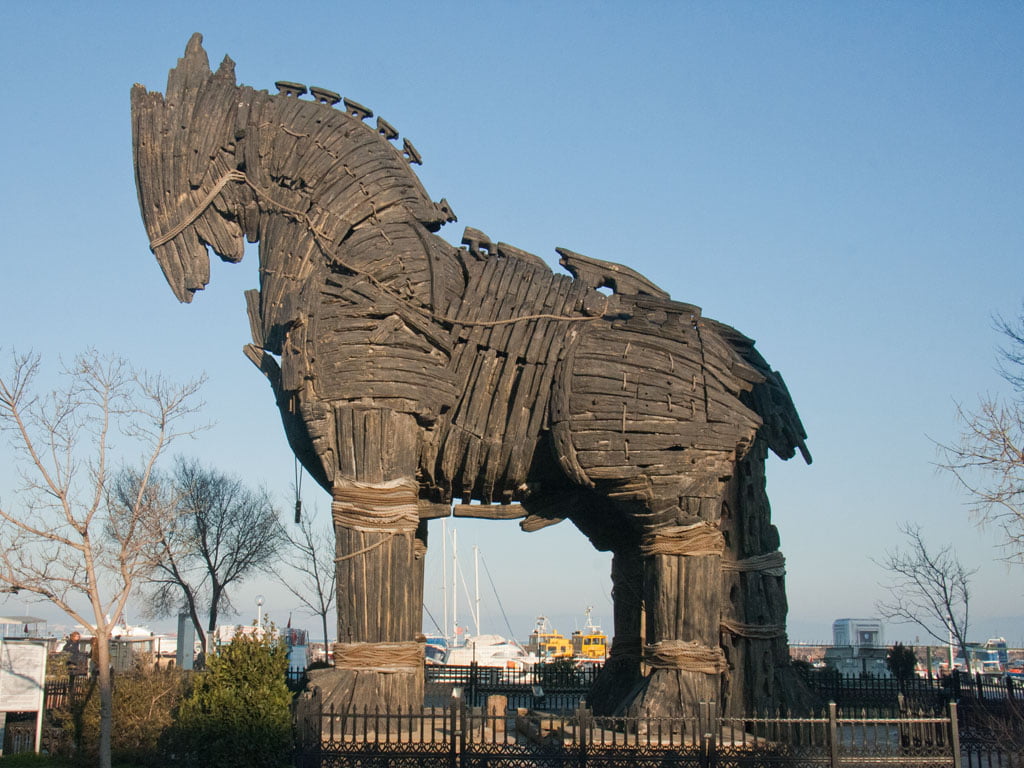The name Troy refers to a place in legends, and a real-life archeological site located in Turkey. But is the legend true? Or the archeological site is just remains of an ancient city? And was that ancient city really called Troy? And located on the same place?
The Legend of Troy
In the legend of Troy, Homer writes about a war between Greece and Troy. The war started after the abduction of Helen, a queen from Sparta. The abduction was done by Paris, son of King Priam, the ruler of Troy. In his work, “Iliad”, Homer describes the Trojan War, which was believed to taken place near the end of the Bronze Age. That puts the timeline around or before 1200 BC, at a time a civilization we call Mycenaean flourished in Greece.
Homer lived around the eight century BC, which is several centuries after the events of the Trojan War took place. The events have not been written until even later, likely during the sixth century BC.
The Iliad is set in the 10th year of the siege against Troy, and describes a series of events that appear to have taken place over a period of few weeks. The belief is that the Trojan war itself lasted for 10 years. The story clearly says that the siege had taken its toll on the Greek force sent to recover Helen.
Some of the key events in the legend include a duel between Menelaus, who is the King of Sparta and rightful husband of Helen against Paris, with the winner supposed to receive Helen. However, the gods intervene, and the war continues. Another epic duel in the Iliad is the one between Achilles, one of the best Greek warriors, and Hector, legendary Trojan warrior.
Contrary to popular belief, the Iliad actually does not end with the destruction of Troy. Instead, it ends with a truce between the two sides. Homer’s next work, the Odyssey, describes the events that happened after the destruction of Troy. The Odyssey is also the place where we can read about the Trojan horse, a gift concealing warriors within. The Trojan horse is the reason Greeks won the War, and it was Odysseus who came up with the idea. The Odyssey describes his journey home after the destruction of Troy.
The real-life city
The site of Hisarlik, located in northwest Turkey, has been identified as being Troy. Research done by archeologists on the site shows that the area was inhabited for almost 4,000 years starting around 3000 BC.
But some researchers believe there is no one single Troy. Instead, there are at least 10, lying in layers on top of each other. Once one city was destroyed, a new one was built on top of it, creating a human-made mound called “tell”.
Archeologists have to dig deep to find the remains of the first settlement. When Heinrich Schliemann excavated the legendary Troy level in 1873, he discovered a cache of treasure, believing to belong to King Priam. The collection included weapons, silver, gold, electrum, copper, and bronze vessels, and other objects made of precious materials.
Troy in Homer’s legend
The city mentioned in the Iliad by Homer belongs to two phases that date between 1700 BC and 1190 BC. The exact site of the city is in dispute, with some archeologists claiming that the work at the site in Turkey shows there was a lower city beyond the citadel.
The biggest problem for identifying Troy as the one in Homer’s legends is the way it ended. Cracks in its walls suggest that the city was hit by an earthquake around 1300 BC. There are also some indications of fire, and slingstones in the destruction layer suggest the possibility of fighting, but an earthquake has caused the most damage. Another problem is that the city was rebuild after the destruction by the same population as before, not by foreign Greek forces.
Was there really a Trojan war?
The big question is always “was there ever a Trojan War”. And if there was, did it happen at the area of Troy?
The problem is, the only written remains found at Troy dating before the eight century Greek occupation is a seal written in Luwian. Scholars have noted that the topography of Troy does seem to generally match that of the real-life city.
However, archeological remains still pose problems. The biggest one is evidence that the city was destroyed by earthquakes, and later on may have received people from southeastern Europe rather than Greece.



